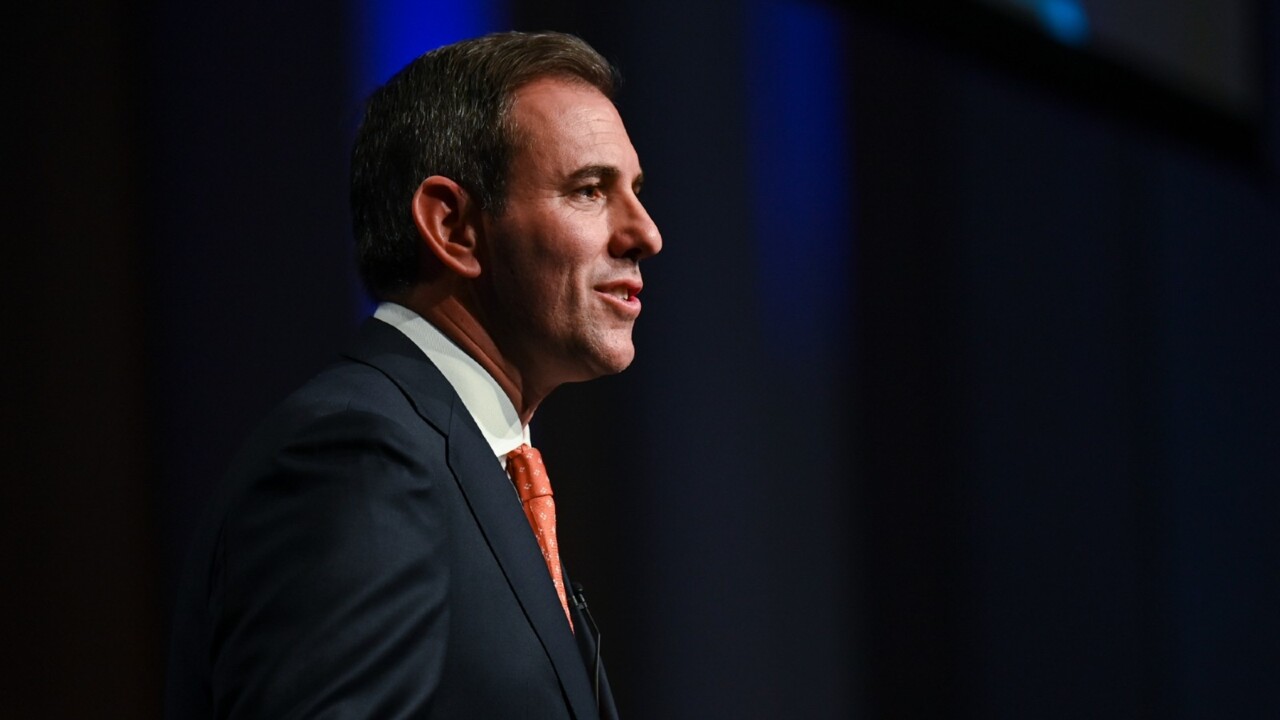Utopia Jim Chalmers turns back time in ‘wellbeing’ budget
The report card on the nation’s prosperity is out of date, with many of its 50 indicators using data from before the pandemic, the cost-of-living crisis and rate hikes.

Jim Chalmers’ long-awaited “wellbeing” budget has used out-of-date data to declare homeowners are finding it easier to repay mortgages, the disabled are less satisfied with services, and mental health is not a rising concern.
The old data fails to reflect the Covid-19 pandemic, billions of dollars in extra NDIS spending, and the most aggressive series of interest rate hikes in a generation.
The Treasurer said the Measuring What Matters report, to be released on Friday morning, would provide policymakers, businesses and community groups with a more complete snapshot of national prosperity and progress than traditional economic metrics such as GDP.
The report spans 50 indicators aiming to gauge the national experience across five wellbeing themes: health, security, sustainability, cohesiveness, and prosperity. But the document – part of an election promise to deliver a “version of New Zealand’s wellbeing budget” — relies heavily on old data that predates the devastating impact of pandemic lockdowns, the cost-of-living crisis, and the blow to millions of family budgets from a dozen Reserve Bank rate hikes over the past year.
The report includes an “overall life satisfaction” rating based on an Australian Bureau of Statistics survey from 2020.
The Measuring What Matters report determined mortgage holders were spending less of their take home pay on housing than two decades ago — but this was based on 2020 data when the official cash rate ranged from 0.75 per cent to a record low 0.1 per cent.
Since then the RBA has hiked rates to 4.1 per cent, leaving households spending a higher proportion of their take-home pay on a mortgage than ever before.
The report showed disabled Australians said their experience with the quality of assistance, and the availability of services, deteriorated, despite the tens of billions in additional spending through programs such as the NDIS. But that finding was based on survey data to 2018, excluding five years of spiralling spending on disability services.
In a further sign of the outdated nature of many of the indicators, the framework’s mental health gauge – measured as the proportion of people who experienced high or very high levels of psychological distress – was “stable”.
Again, the finding used surveys between 2005 and 2018, years shy of what experts dubbed a mental health “crisis” triggered by lengthy pandemic lockdowns and social isolation.
Other indicators, such as on job opportunities, wages, and “broadening access to work” used more recent ABS labour market data to May this year to show an improving trend by capturing the turbocharged employment growth that followed the end of Covid lockdowns.
The New Zealand wellbeing budget has up-to-date data and is developed as part of the traditional budget process.
Responding to questions about out-of-date data, a spokesman for the Treasurer said compiling the report “revealed some data gaps that we will work to address as we refine and develop the framework going forward”.
“As part of the consultative process, Treasury identified the best available indicators for the framework using data from the ABS, commonwealth departments and other sources,” the spokesman said.
“The latest available data is used and where there are gaps, we’ve drawn on a variety of data sources to help inform the commentary in the framework. This is the first iteration of the framework, which will evolve over time.”

Dr Chalmers said the findings of his report were developed following extensive consultation involving “hundreds of people and organisations”.
“Measuring What Matters is part of a deliberate effort to put people and progress, fairness and opportunity at the very core of our thinking about our economy and our society, now and into the future,” he said in a statement.
The report, which Dr Chalmers promised to deliver from opposition as early as 2020, showed “mixed” progress across the 50 indicators, with 20 improving and 12 deteriorating across various time frames.
The framework did not rank nor weigh wellbeing themes, and did not create a composite “GDP-like” overall wellbeing measure.
The report showed rising incomes, improving life expectancy, and more job opportunities over the past two decades, and that Australians were more accepting of diversity, and had more trust in each other.
“However, Australians are experiencing higher rates of chronic conditions and, in some instances, are finding it harder to access health, care and support services. We perceive our national security to be lower and we face new threats online,” Dr Chalmers said.
In health, the report found life expectancy between 2003 and 2021 had improved to 81.3 years and 85.4 years, respectively. Mental health, as measured by proportion of people who experienced high or very high levels of psychological distress, was “stable” between 2005 and 2018 at 13 per cent.
But the “prevalence of chronic conditions” indicator – measured as a share of the populace – deteriorated to 47 per cent between 2008 and 2021.
The report showed a higher proportion of Australians reporting they felt safe over the 10 years to 2022, with 54 per cent saying they felt safe at night (up from 49.8 per cent in 2013), and 92 per cent during the day.
A declining share of Australians reported experiencing violence in the previous 12 months, at 2.9 per cent among women, and 6.1 per cent among men.
But when it came to “national safety”, and amid growing tensions with China and Russia’s invasion of Ukraine, there was a drop in the proportion of who felt “safe” or “very safe” based on views of world events, at 63 per cent in 2023. Australians also felt less safe online.
When it came to sustainability, the report showed a positive national report card, with accelerating emission reductions between 2005 and 2022. The proportion of land and sea set aside as conservation areas lifted to 22 per cent and 45 per cent, respectively, in the two decades to 2022. Biological diversity, however, declined.
In the area of social cohesion, there was more bad news than good, with a lack of timely data again presenting an issue.








To join the conversation, please log in. Don't have an account? Register
Join the conversation, you are commenting as Logout